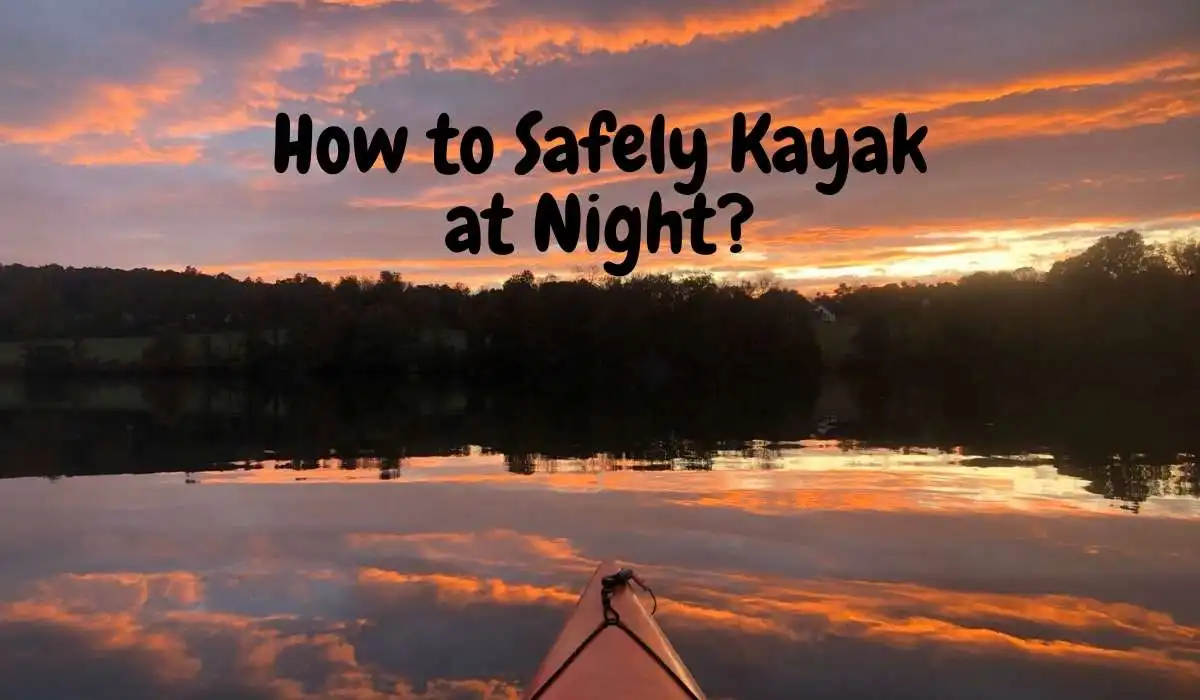When kayaking at night, prioritize safety. Use waterproof LED lights for visibility. Stay within 100 feet of the shore to spot hazards. Equip yourself with bright kayak lights, reflective gear, and a waterproof flashlight. Be alert for other watercraft and have a way to communicate in emergencies. Invest in a waterproof headlamp and maintain your gear regularly. Your safety matters above all else, and these tips can help.
Key Takeaways
- Use waterproof LED lights for enhanced visibility.
- Stay within 100 feet of shore for safety.
- Equip with essential safety gear like PFDs and signaling devices.
- Be vigilant of other watercraft with communication tools onboard.
- Maintain equipment, rely on navigational aids, and share your route plan.
Essential Lighting for Night Visibility
For maximum visibility while kayaking at night, outfit your kayak with waterproof LED lights for side visibility. Safety is paramount on the water, especially during nighttime excursions. The Coast Guard recommends using bright kayak lights to guarantee that other watercraft can easily spot you. Additionally, consider adding a waterproof flashlight to your safety gear for emergencies.
Proper lighting equipment is essential for a safe night kayaking experience. Reflective tape and clothing can further enhance your visibility, making it easier for others to see you in low-light conditions. By incorporating these lighting elements into your gear, you greatly reduce the risks associated with kayaking at night.
Proximity to Shore for Safety
To enhance your safety while kayaking at night, maintain a close distance of no more than 100 feet from the shoreline. By paddling near the shore, you increase shoreline visibility, making it easier to spot potential hazards such as rocks, submerged objects, and other watercraft. This proximity to the shore not only helps in avoiding these dangers but also provides quick access to land in case of emergencies.
Additionally, staying close to the shoreline offers better orientation reference points, reducing the risk of getting disoriented in the dark waters.
Being near the shore enables easier communication with others on land or nearby boats, ensuring that you can quickly seek assistance if needed during your night kayaking adventures. Remember, the nearness to shore plays an essential role in ensuring your safety in the dark. By staying within this recommended distance, you enhance your overall kayaking experience while mitigating potential risks that come with exploring the waters at night.
Importance of Safety Equipment
Enhancing your safety during night kayaking relies heavily on having the appropriate safety equipment readily available and in good condition. Essential gear includes waterproof LED lights, a headlamp for hands-free illumination, and a waterproof flashlight for emergencies.
Personal flotation devices (PFDs) are essential for each kayaker onboard, providing added safety in case of an accident. Proper lighting equipment like bright kayak lights improves visibility and guarantees other watercraft can see you.
Reflective gear, such as clothing and accessories, enhances visibility in low-light conditions. Signaling gear, like flares or a whistle, is crucial for communication and emergency situations. These tools not only increase your visibility to others but also help you navigate safely and handle unexpected events while kayaking at night.
Prioritize safety by ensuring all your safety equipment is functioning correctly before commencing on a night paddling adventure.
Vigilance for Other Watercraft
When kayaking at night, your attentiveness for other watercraft is vital to ensure a safe and enjoyable experience on the water. In the darkness of nighttime kayaking, it’s important to keep in mind the presence of other watercraft that may not easily spot you. Using waterproof LED lights on your kayak improves visibility, making it easier for larger vessels to see you.
Listening for engine noises and watching for navigation lights can help you detect other watercraft in the vicinity. Remember to maintain a safe distance from motorboats, sailboats, and any other watercraft to avoid potential accidents. Giving way to larger vessels and giving them the right of way is a safety measure to prevent collisions.
Furthermore, having a communication device onboard can be beneficial for emergencies or signaling other watercraft about your presence. Be aware of water temperatures and always prioritize safety when sharing the waters with different types of vessels at night.
For improved safety and navigation during night kayaking, rely on waterproof GPS devices and carry a marine radio or communication device. Waterproof GPS devices are crucial for accurate navigation in low-light conditions, guaranteeing you stay on course and reach your destination safely. A marine radio or communication device is essential for staying connected with others on the water, providing a means to call for help in case of emergencies.
Utilize reflective tape or markers on your kayak to enhance visibility in the dark, making it easier for other watercraft to spot you.
Take bearings of prominent landmarks or reference points along your planned route to aid navigation at night.
Share your planned route and estimated time of return with a trusted individual before heading out to make sure someone knows your whereabouts.
Consider using additional navigational tools like compasses or charts to supplement your GPS device for a complete navigation strategy.
Equipment Maintenance and Precautions
Check your kayak regularly for any signs of damage to make sure it’s essential for night paddling. Inspect the hull for cracks, the seams for any separation, and the deck rigging for secure attachment.
Maintaining all safety equipment is vital for a smooth night paddling experience. Check your kayak lights, including LED lights and spotlights, to make sure they’re functioning correctly. It’s vital to wear a high-quality, properly fitted personal flotation device (PFD) for safety. Invest in a waterproof headlamp to preserve your night vision and navigate efficiently.
Before venturing into open waters at night, make sure you’re equipped with the right gear, including a waterproof GPS, radio, and other essential tools. Familiarize yourself with the waters you’ll be paddling in, especially if you’re in unfamiliar territory.

